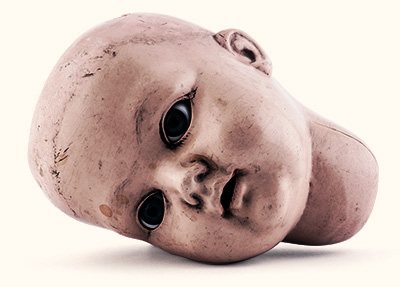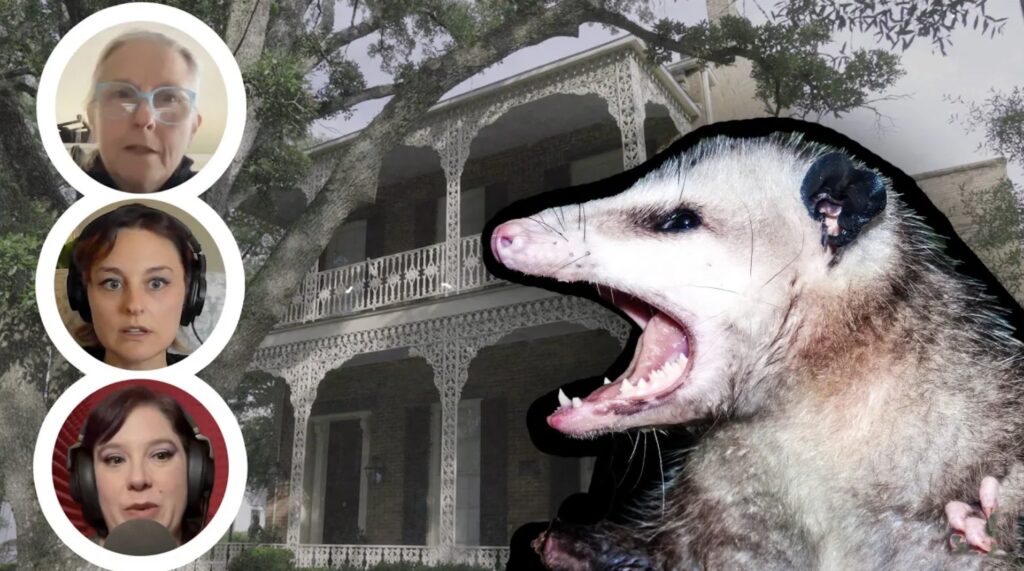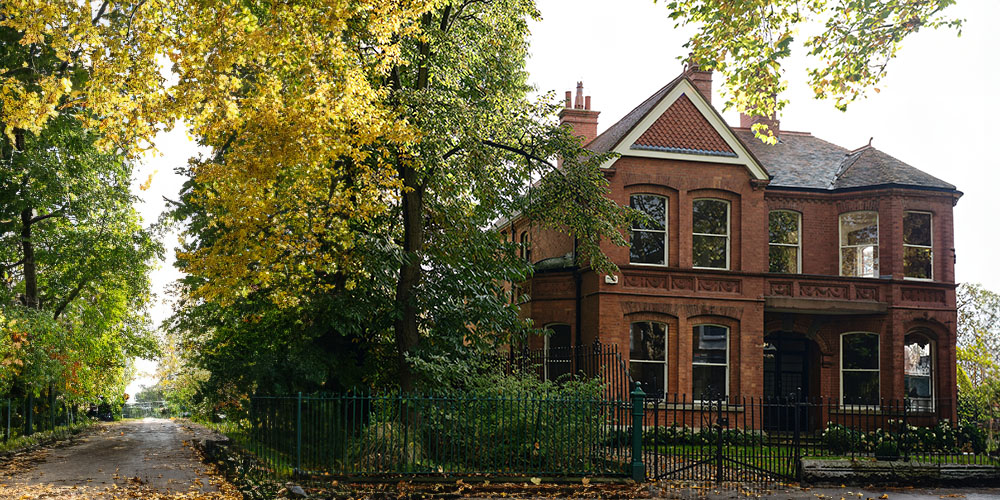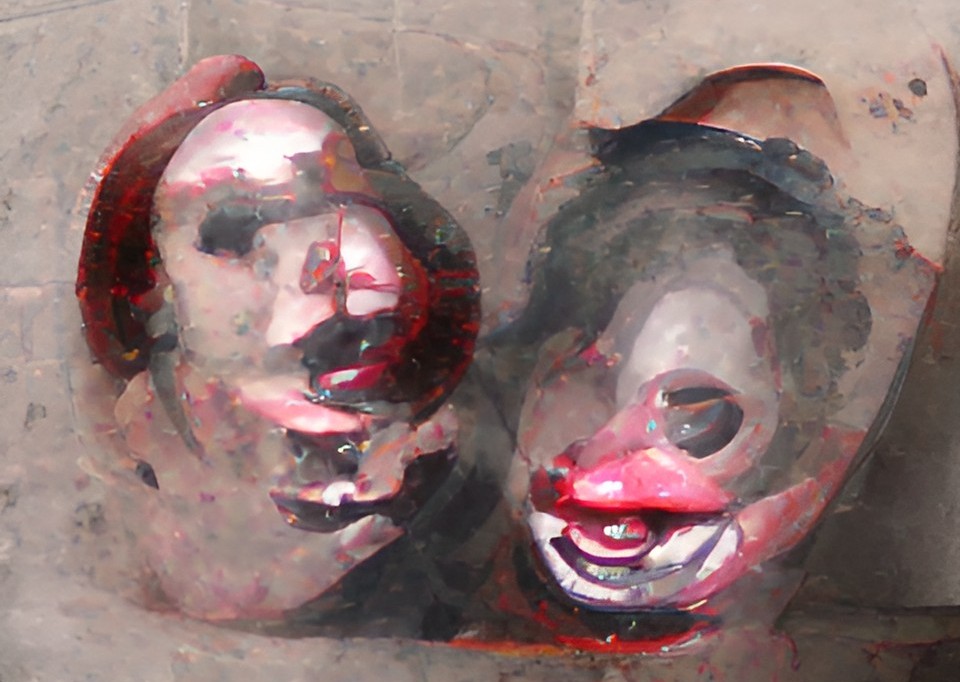After years of creating artwork for our podcast, it’s no surprise that Becky knows how to draw a haunted house. Becky is a professional artist and graphic designer, so she has extensively studied both the technical side of drawing, and the psychological aspects of how to use an illustration to evoke a specific feeling. In this article, we’ll summarize what she does to create drawings of haunted houses from realistic to cartoon, and from funny to scary. Follow along with these process drawings to learn to draw a haunted house, step by step. Watch each process drawing video for a demonstration by Becky herself, then draw your own unique haunted house incorporating the following techniques.
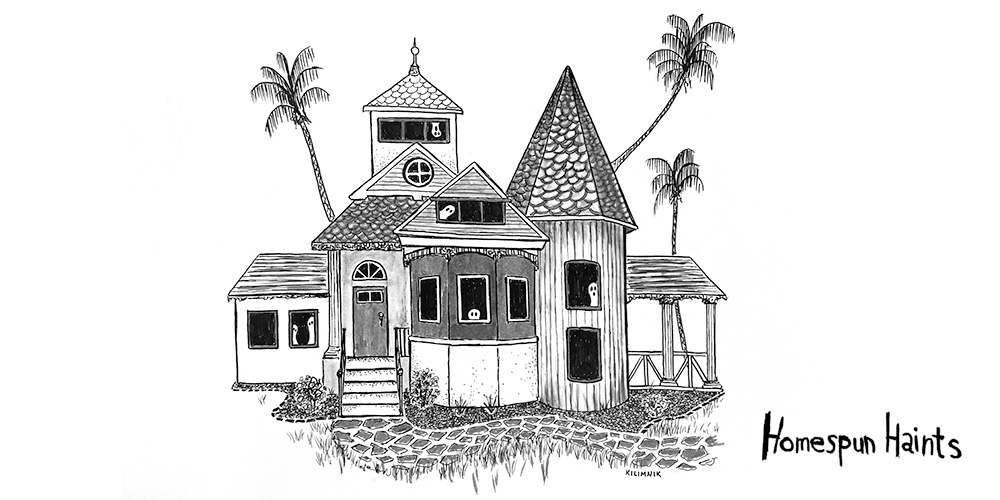
Draw a haunted mansion with me
The most reliable way to draw a haunted house is to draw a real one that everyone already associates with ghosts. The Winchester Mystery House is a great example of one of these famous haunted places. This quirky real haunted mansion is iconic in the eyes of haunted house aficionados.
The Winchester house itself also embodies many of the basic tenants of how to draw a scary drawing. Here is a video of Becky’s step-by-step realistic line drawing of the Winchester Mystery House, which Diana got to take a ghost tour of a few years ago.
Becky uses a straight edge to make clean lines and angles, because this is a realistic drawing. Almost all real houses feature standard architecture techniques, like right angles, straight lines, and peaked roofs. There are many parts of the Winchester House that are quite standard, which we think makes the more unusually constructed parts of the house even more intriguing.
I mentioned above that the Winchester house itself exemplifies the basic components of a scary drawing, making it an excellent example for this tutorial. But what are the basic components of how to draw a scary haunted house?
What is the difference between drawing a haunted house and a regular house?
Unnatural distortion
Unnatural distortion makes your drawing feel wrong and uncomfortable. This works best when it’s subtle. When something is mostly normal, but just a little bit off, we may not consciously notice the oddity. But our subconscious lizard brain is terribly uncomfortable with the dissonance. As we feel the subconscious discomfort, we could associate that with an intuitive sensation, much like the intuitive way we first recognize a haunting.
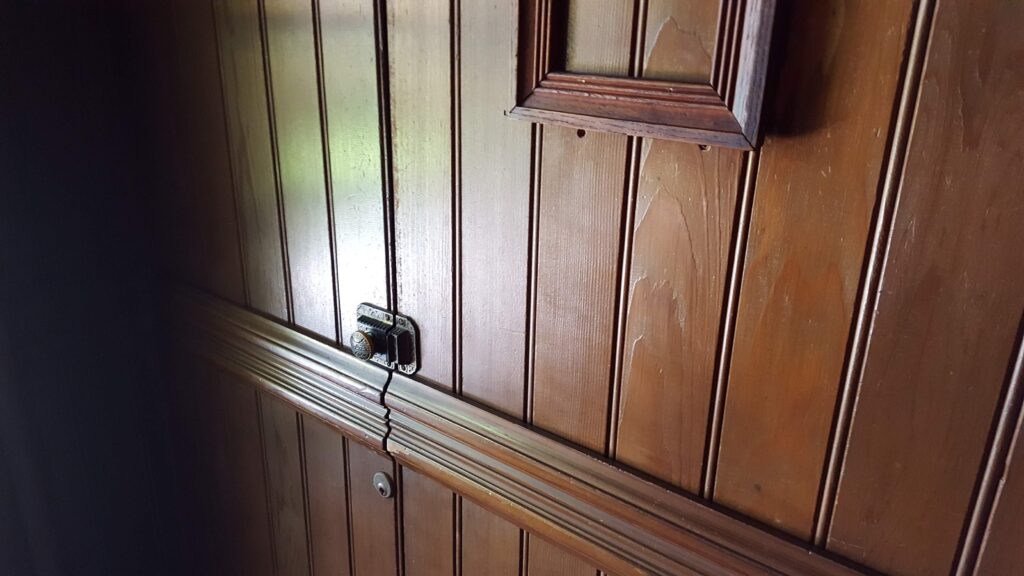
Translocation
Translocation makes your drawing feel strange and dangerous. The Winchester House’s famous Door to Nowhere is a very plain and normal doorway. It has a frame, a standard wooden door, a doorknob. Everything seems very banal and predictable about it. But when the door opens, it reveals not a room, or a hallway, or even a few steps down to a back garden. The Door to Nowhere actually leads to a tiny bit of the roof that was never meant to be stood on. Another step out would lead to a sheer drop off onto the pavement a full story below.
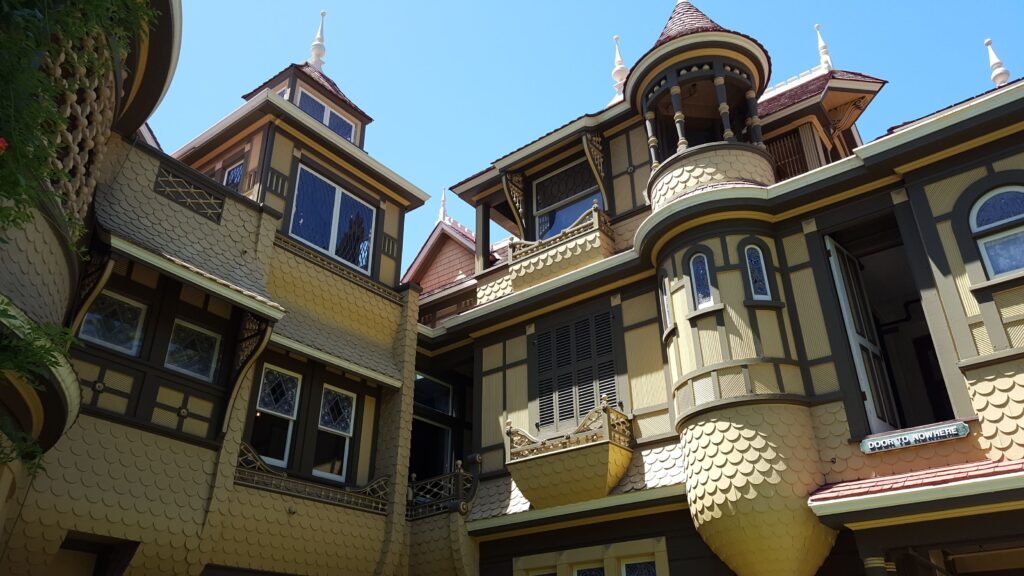
The same is true for the stairs that lead directly up to a solid ceiling in the Winchester. These seemingly normal architectural details put in entirely the wrong place or context tell us a house is beyond our comprehension. They imply either some mystical arcane knowledge we can only guess at, or a degree of unhinged behavior, which both feel dangerous and frightening.
Disparate meshing
Disparate meshing makes your drawing feel monstrous and paranormal. What are some things that just don’t belong on a house? This might be easy to add to a cartoon drawing of a haunted house. One could extend the front walkway to end in a giant dripping tongue, or turn the broken slats of a basement storm shelter door into the teeth of a jarring rictus.
Disparate meshing is a little more challenging on a realistic drawing, but a successful result is even spookier. Maybe the front windows and doors align in a way that subconsciously mimics an angry face. Even a vague face shape will trigger a natural human response called pareidolia. This phenomenon causes us to see human faces in random patterns.
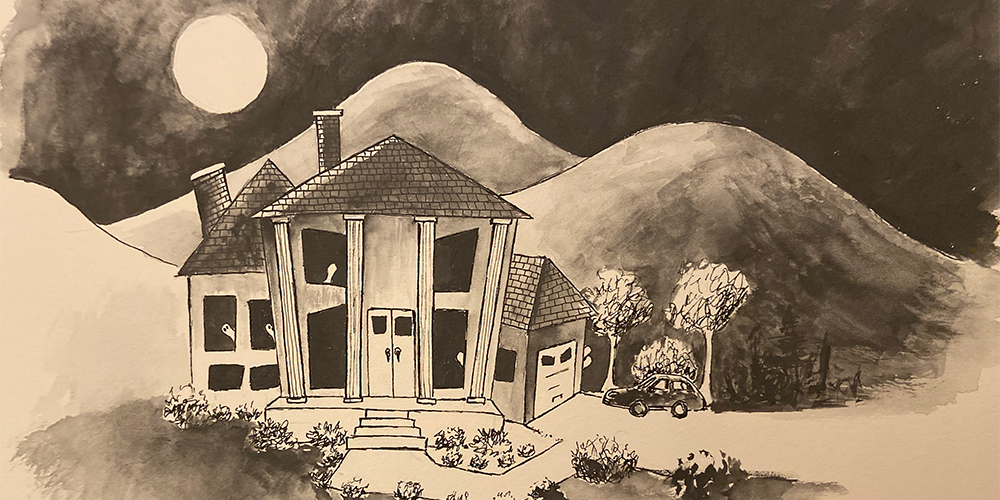
This simple house displays a few different moods, does it not?
The front of the Winchester house is it’s most conventional part visually. Yet still, there are those two small, round windows, set symmetrically on either side of an arched doorway, with a small set of balusters only in front of the doorway, and a triangle shape above it. It’s not a very accurate face, so it wouldn’t immediately strike the viewer as an intentional face. But the subtle suggestion of a face can be enough to subconsciously imbue the house with a creepy sense of anthropomorphic agency.
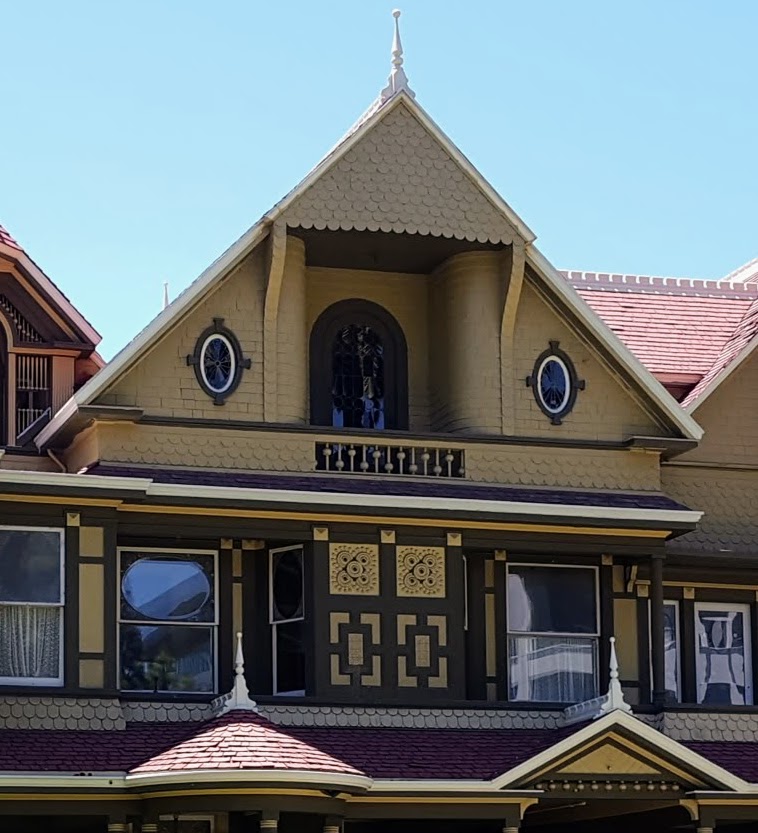
Another example of disparate meshing is adding a disturbing situation to your house drawing. What could you add to the drawing to imply that some tragic event has taken place there? Remember, all haunted houses were normal houses before they became haunted. What event or circumstance created the haunting, and is there a way to display that in your picture? There are many ways to make a normal house look haunted because of the situation it’s in.
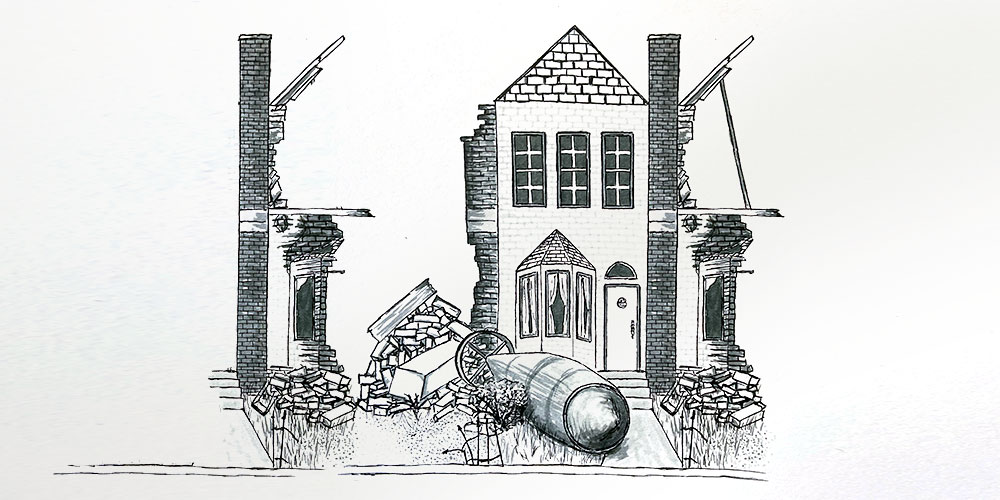
How to draw a unique, realistic haunted house
Realistically drawing the outside of a haunted house requires significant creativity. After all, most houses look pretty generic from the outside. It takes technical skill and imagination for an artist to imbue a sense of hauntedness onto a technically “normal” image of a house.
You don’t have to draw a real haunted house to create a realistic haunted house drawing. Indeed, the best haunted house drawings come from the imagination. The simplest way to start is to draw a mundane structure that people associate with creepy ghost stories. Perhaps you could sketch a cabin in the woods, or a classic Victorian cottage. Then, incorporate the above techniques as subtly as you can to create a subconscious sense of wrongness. The key to a creepy realistic scary house drawing is when you and I both know that the house is haunted, but we can’t quite put our finger on why we know.
Want to hear a story from a real-life medium who cleanses houses of ghosts before they go to market? Listen to this interview:
How to draw an easy, cute haunted house for beginners and kids
Even beginner artists can draw a cute cartoon Halloween haunted house using the above advice. For very little kids, a quirky house drawing embodies all the important elements that a haunted house drawing does for adults (disparate meshing, translocation, and unnatural distortion), but much more obviously, and minus the spooky elements.
How to draw a simple haunted house
The average cartoon haunted house drawing is more cute than scary. The overtly so cute additions and bright colors are why these types of kindergarten haunted house drawings aren’t scary per-se. Yet the elements that make them uncomfortable and unsettling subconsciously are all there. The following how-to video should make spooky house drawing easy for beginners.
A big benefit to learning to draw haunted house pictures with your kids is that children have such unbridled imaginations. Kids come up with wild concepts that are too illogical or fantastical for our censored and jaded adult brains to easily conceptualize. Quickly scribbling wildly distorted and unpredictable houses with your kids can be a great way to brainstorm for haunted house drawing ideas that could become more polished artwork later.
What are some ways to incorporate ghost folklore into a house drawing?
There may be circumstances where you want to illustrate a house within a universe where ghosts exist, but you don’t want to imply that house is haunted. In that case, adding some details associated with ghosts and folklore can be useful. One example from the American South is the addition of haint blue paint to the porch ceilings, doors, and window frames. (You do know what haint blue is, right? And what a haint is?) These videos of Becky painting houses with symbolic haint blue window frames are good examples of how to draw a non-haunted house in a scary horror scene that implies the threat of real ghosts getting in.
The house above isn’t necessarily haunted. In fact, one could argue it’s less likely to harbor spirits than an average house, given that there’s an obvious ghost repellant apparent in the image. The imagery invokes the thought of ghosts and the paranormal, without necessarily implying that the house in the image is haunted.
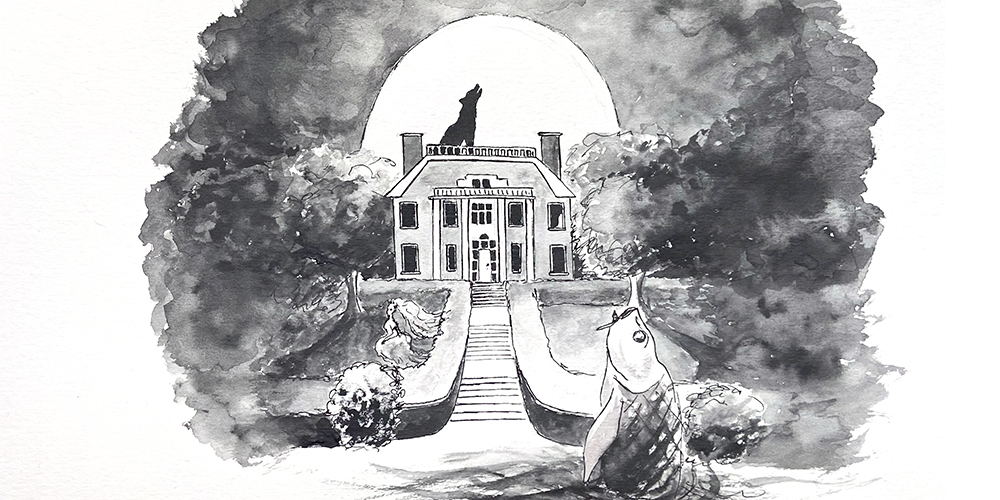
What should you draw on the inside of a haunted house?
If drawing the outside of a realistic haunted house is challenging due to its technical subtlety, that implies that the inside of a haunted house is much easier to portray. But why would this be?
How do you draw a haunted house on the inside?
What is the one thing every haunted house has in common with every other house? It’s that at some point in the past, it wasn’t haunted; it was just a regular house. The house became haunted at some point, either because of something that happened there, or because of something that came into the house. That means objects, people, and scenes within the house can clearly convey a sense of hauntedness by depicting the act of becoming haunted, or the consequences of a haunting.
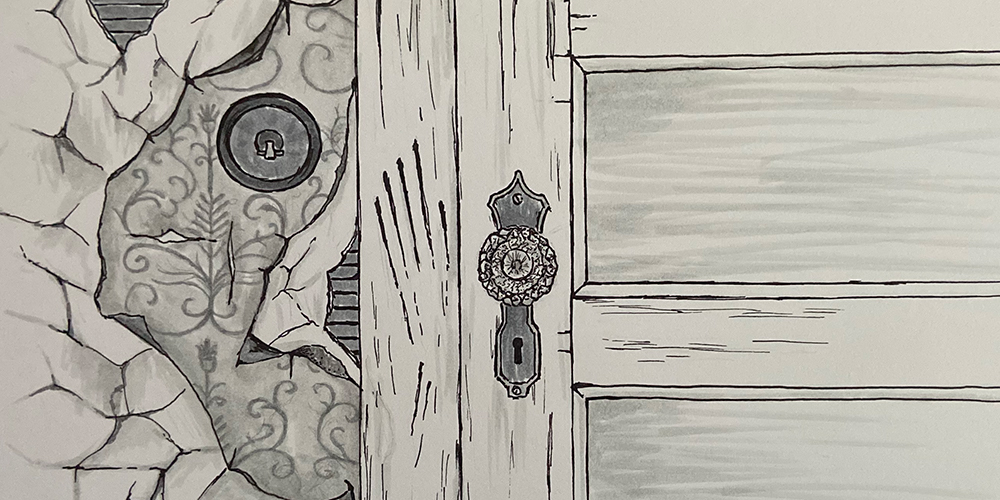
Drawing a house full of haunted objects
There are only a certain number of items that are realistically visible from the outside of a house. Maybe a porch swing, with a pitcher of ice-cold lemonade set upon a white wicker side table. But not many of these items imply a haunting; at least not without delving into the absurd, like a potted venus flytrap, or the fantastical, like a spectral silhouette gazing out a window.
But there are thousands of items that could realistically be inside a house. What types of items might you find inside a haunted house? Maybe tools for occult rituals, that might be used to summon a specter. Or maybe objects that people feel are more likely to be haunted themselves, like antique furniture, or creepy dolls. The inside of a house also evokes a sense of vulnerability, which can contribute to that subconscious feeling of unease we associate with haunted house drawings.
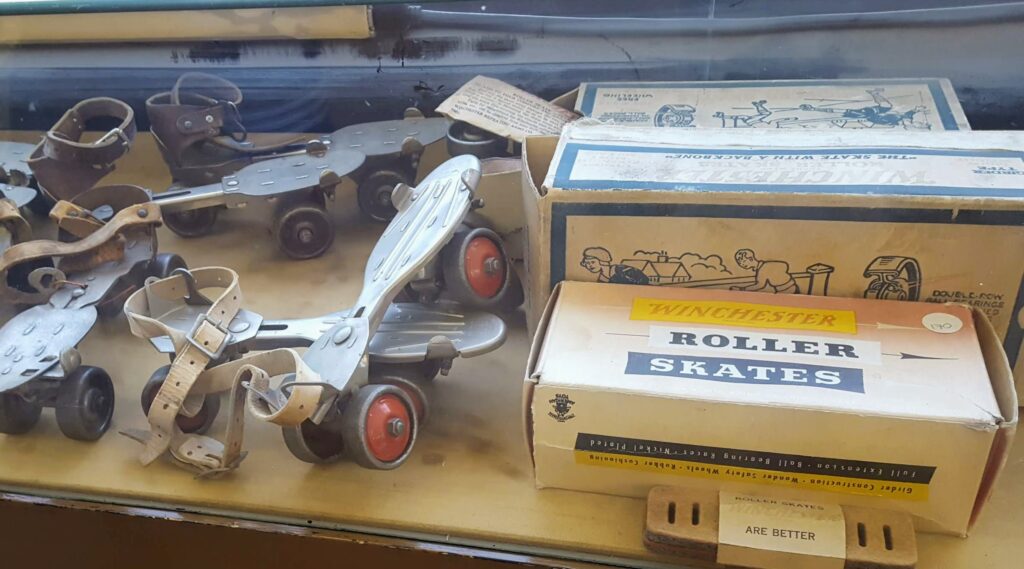
Drawing people and ghosts
Another way to imply a haunting in a drawing is to include characters. Again, subtlety is key to a realistic drawing. Are the characters set apart in time from the rest of the drawing? Are they wearing period dress? Do they lurk in strange places wearing woeful expressions? Or do they show fatal injuries? Are they floating above the floor?
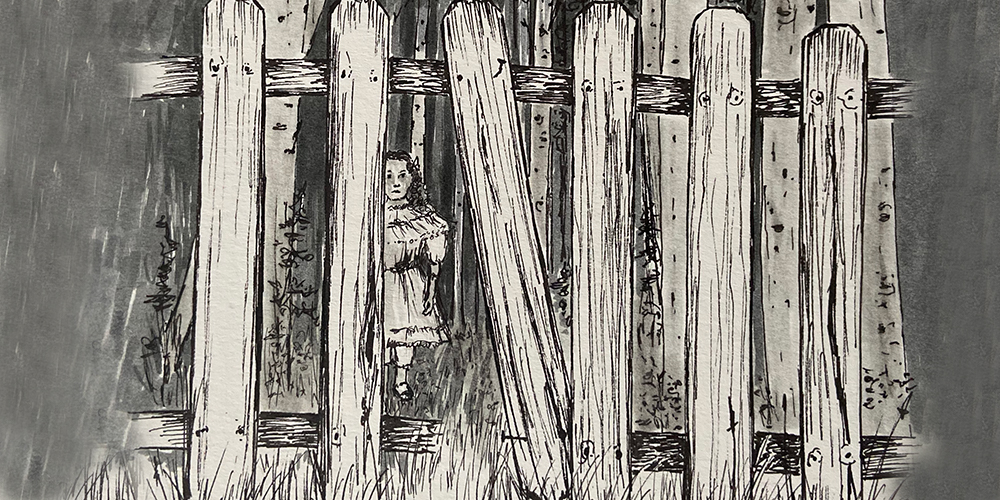
This step is risky if you’re going for realism. It’s hard to draw a realistic image of a ghost. That’s because, at their most realistic, ghosts just look like normal people. Drawing a normal person who is slightly transparent works, but that just doesn’t come across as easily in a black-and-white sketch the way it does in a photograph. The more obviously you try to draw a ghost, the more cartoonish the drawing is going to look.
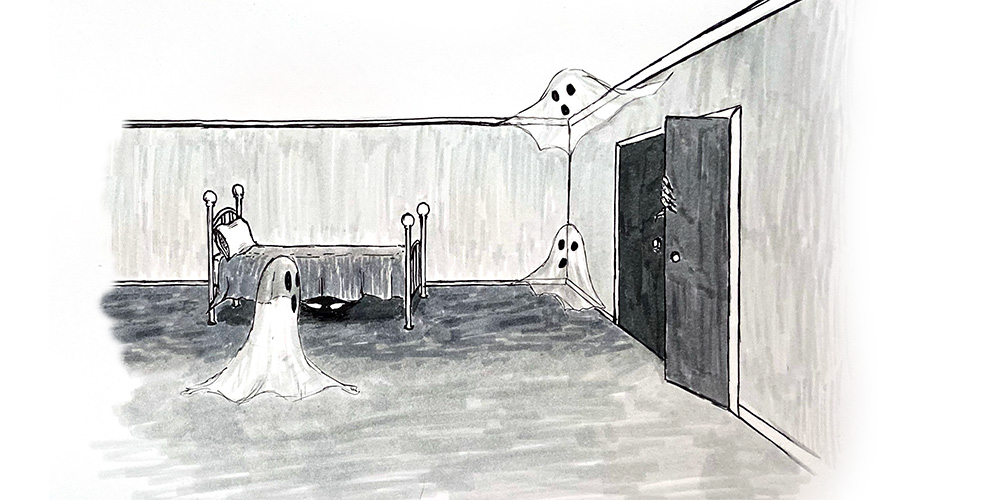
How to draw a funny haunted house
Sometimes, adding images of ghosts to your drawing can make it instantly less realistic. But that’s not always a bad thing, depending on the desired effect. Becky’s drawing of a haunted bathroom is intentionally unrealistic to emphasize the hauntedness in a comedic fashion. The checkered floor, clawfoot tub, and shower curtain rod subtly imply that this bathroom exists in an old house with renovations. This is, to those in the know, a circumstance very associated with hauntings.
But to clue in the casual observer, Becky has decided to add some unrealistic macabre details. She includes a skeletal hand, a ghostly reflection, blood oozing from the toilet bowl, and emphasized sharp claws on the tub’s claw feet. The artist didn’t necessarily feel that the image wasn’t scary enough. Nor did she necessarily need those cheesy details to get the point across. She wanted to intentionally draw a silly, comedic picture of a haunted house.
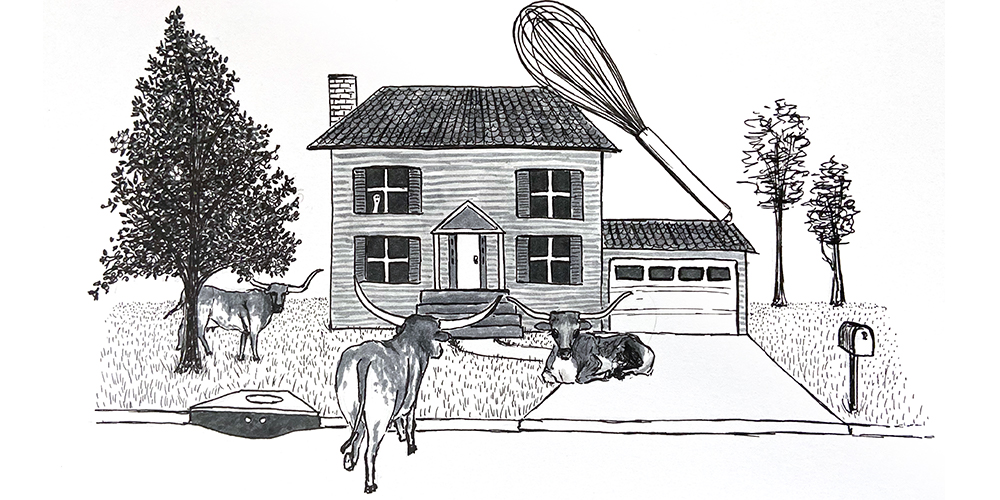
Finally, if you prefer to have things drawn for you, rather than drawing them yourself, we get it. This massive detailed haunted mansion wasn’t an easy drawing to make. Diana doesn’t draw much at all either; she leaves that to Becky. Becky sells prints of some of her haunted house drawings, including the one of the Winchester mansion below, in our merch store.
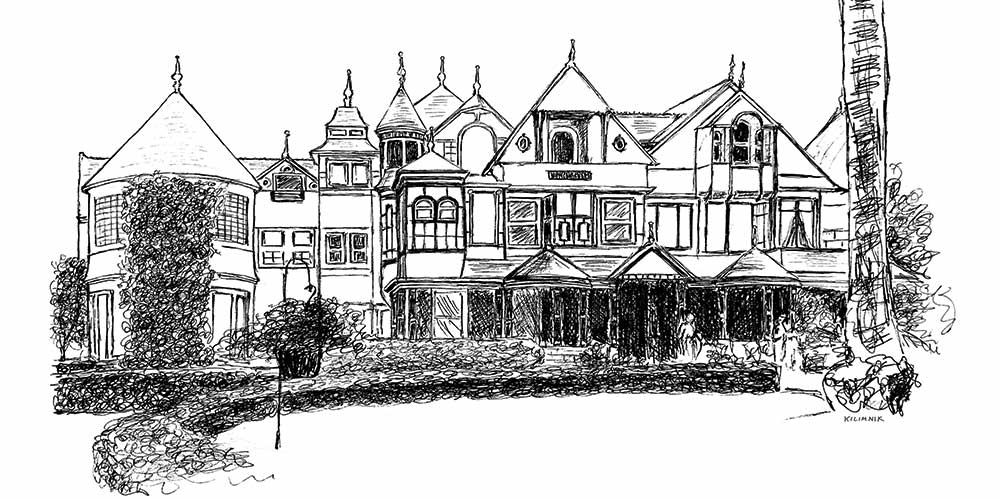
Which video of how to draw a haunted house was your favorite?
We hope this tutorial has illuminated how to draw haunted houses, from easy cartoon haunted house sketches for beginners, to realistic and psychologically unsettling printable horror drawings for advanced artists. Rather than just an easy, step-by-step guide to the physical pieces, we wanted to provide you with deeper concepts. We hope that understanding these elements sparks your own unique artistic creativity.
If you haven’t already, please check out our YouTube haunted house direct draw videos, embedded above. Hopefully, they fill you with haunted house ideas to draw. Let us know if you can spot the three basic elements in the YouTube comments! Your feedback helps makes our day a spooky day!

